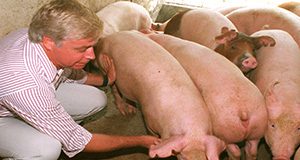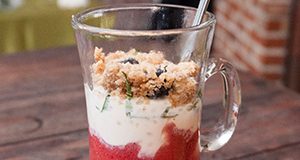The Food Safety Modernization Act (FSMA) was signed into law in January of 2011 and is considered the most sweeping reform of food safety regulations in 70 years. The human food regulations were composed first and, with significant input from industry, academia, and consumer groups as well as other agencies, were then modified to better suit animal food production. In Florida, these new regulations apply to facilities that manufacture, process, pack, or hold food or food ingredients for animals. These facilities may include pet food manufacturers, renderers, ethanol distillers, feed mills, distributors, and others. The primary goal of these regulations is to ensure safe food for the animals, people who handle the feed, and people who consume the final animal products. This 3-page fact sheet discusses requirements, facilities that will most likely be expected to be in compliance, deadlines, development of a food safety plan, and preventive controls qualified individuals. Written by Jason M. Scheffler and Chad Carr, and published by the UF Department of Animal Sciences, December 2016.
http://edis.ifas.ufl.edu/an330
Category: Food Safety
A Guide to Probiotics and Health
Probiotics are beneficial for gastrointestinal wellness, immunity, and a variety of other health outcomes. There are hundreds of probiotic supplements available in the marketplace and choosing a supplement can be challenging. This six-page fact sheet provides a summary of the health benefits of probiotics that are backed by a high level of scientific evidence. Written by Wendy J. Dahl and published by the Food Science and Human Nutrition department.
http://edis.ifas.ufl.edu/fs286
Guidelines for Operation and Usage of County Kitchens in the State of Florida
 In recent years, many people have become interested in developing small food businesses. Using county kitchens to make food products for sale may seem very attractive. However, because of different local, state, and federal regulation requirements, there may be some confusion and unresolved conflicts among different parties as to the legalities and practicalities involved. This 3-page fact sheet provides guidelines and advice for Florida Extension personnel to use when determining the appropriate usage for their kitchen facilities, based on a situation in one Florida county. The publication covers utilization, roles and responsibilities, and potential liability issues relevant to the use of county kitchens, providing some potential solutions to conflicts for all parties. Written by Amarat Simonne, Tim Wilson, Geralyn Sachs, Joanne Cooper, Brenda Morris, Steven von Bodungen, and Liz Felter, and published by the UF Department of Family, Youth and Community Sciences, August 2016.
In recent years, many people have become interested in developing small food businesses. Using county kitchens to make food products for sale may seem very attractive. However, because of different local, state, and federal regulation requirements, there may be some confusion and unresolved conflicts among different parties as to the legalities and practicalities involved. This 3-page fact sheet provides guidelines and advice for Florida Extension personnel to use when determining the appropriate usage for their kitchen facilities, based on a situation in one Florida county. The publication covers utilization, roles and responsibilities, and potential liability issues relevant to the use of county kitchens, providing some potential solutions to conflicts for all parties. Written by Amarat Simonne, Tim Wilson, Geralyn Sachs, Joanne Cooper, Brenda Morris, Steven von Bodungen, and Liz Felter, and published by the UF Department of Family, Youth and Community Sciences, August 2016.
http://edis.ifas.ufl.edu/fy1469
Shiga Toxin-Producing Escherichia coli: Detection, Differentiation, and Implications for Food Safety
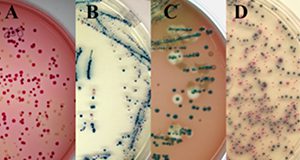
Shiga toxin is a protein found within the genome of a type of virus called a bacteriophage. These bacteriophages can integrate into the genomes of the bacterium E. Coli. Even though most E. coli are benign or even beneficial members of our gut microbial communities, strains carrying Shiga-toxin encoding genes are highly pathogenic in humans and other animals. This six-page fact sheet discusses the two types of Shiga toxins and the best approaches to identifying and determining which Shiga toxin is present. Written by William J. Zaragoza, Max Teplitski, and Clifton K. Fagerquist and published by the Department of Soil and Water Sciences.
http://edis.ifas.ufl.edu/ss654
Preventing Foodborne and Non-foodborne Illness: Vibrio vulnificus
 Vibrio vulnificus occurs naturally in warm brackish and saltwater environments. During the warmer months, this bacterium can reach particularly high concentrations in filter-feeding shellfish that inhabit coastal waters. Foodborne illness from V. vulnificus is almost exclusively associated with consumption of raw oysters. This 3-page fact sheet is a major revision that discusses risk of infection, times to seek medical treatment, symptoms, activities related to illness, foods commonly associated with the bacterium, handling and storage of seafood and shellfish, and methods of prevention. Written by Anita C. Wright, Renée M. Goodrich, Michael A. Hubbard, and Keith R. Schneider, and published by the UF Food Science and Human Nutrition Department. Original publication date: July 2009. Revised October 2015.
Vibrio vulnificus occurs naturally in warm brackish and saltwater environments. During the warmer months, this bacterium can reach particularly high concentrations in filter-feeding shellfish that inhabit coastal waters. Foodborne illness from V. vulnificus is almost exclusively associated with consumption of raw oysters. This 3-page fact sheet is a major revision that discusses risk of infection, times to seek medical treatment, symptoms, activities related to illness, foods commonly associated with the bacterium, handling and storage of seafood and shellfish, and methods of prevention. Written by Anita C. Wright, Renée M. Goodrich, Michael A. Hubbard, and Keith R. Schneider, and published by the UF Food Science and Human Nutrition Department. Original publication date: July 2009. Revised October 2015.
http://edis.ifas.ufl.edu/fs147
Pureed Food: Guide to Quick Meals

Puréed foods are an important source of nutrients for those who have problems chewing or swallowing. A puréed food is any item that has been processed into a smooth and uniform texture and therefore does not require chewing. Purées can be made from most foods and this guide provides some tips for fast and easy to prepare puréed foods. This four-page fact sheet covers the preparation of puréed foods from canned vegetables and fruits; beans, peas, and lentils; and mixed dishes. It also provides a useful example meal plan. Written by Wendy J. Dahl, and published by the Food Science and Human Nutrition Department.
http://edis.ifas.ufl.edu/fs277
Healthy Living: Reliable Websites
 The number of resources available online grows every day. Unfortunately, there are no regulations to ensure that the information on these websites is accurate. Older adults can readily access reliable information on the Internet by focusing on government and education sites. This 2-page fact sheet is a major revision that provides a list of trustworthy Internet sources related to nutrition, health, food safety, and general interest for older adults. Written by Linda B. Bobroff and Leigh Ann Martin, and published by the UF Department of Family, Youth and Community Sciences, revised January 2016.
The number of resources available online grows every day. Unfortunately, there are no regulations to ensure that the information on these websites is accurate. Older adults can readily access reliable information on the Internet by focusing on government and education sites. This 2-page fact sheet is a major revision that provides a list of trustworthy Internet sources related to nutrition, health, food safety, and general interest for older adults. Written by Linda B. Bobroff and Leigh Ann Martin, and published by the UF Department of Family, Youth and Community Sciences, revised January 2016.
http://edis.ifas.ufl.edu/fy102
Preventing Foodborne Illness: Typhoid Fever: Salmonella Typhi
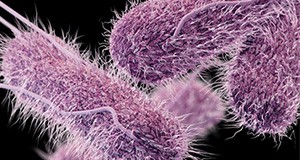
Typhoid fever is a blood infection caused by the consumption of food or water contaminated with the bacterium Salmonella enterica.Typhoid fever is easily controlled and relatively uncommon in the United States, but an estimated 21.5 million people per year are affected by typhoid fever in developing nations including regions in Asia, Africa, and South America. Many of the cases of typhoid fever in the United States are acquired through international travel to these regions. This four-page fact sheet explains the causes and symptoms of typhoid fever, as well as describing who is at risk, what foods have commonly been associated with typhoid fever, and how to implement certain sanitation methods to prevent the spread of typhoid fever. Written by Keith R. Schneider, Renée Goodrich Schneider, and Rachael Silverberg, and published by the Food Science and Human Nutrition Department.
http://edis.ifas.ufl.edu/fs125
Preventing Foodborne Illness: Campylobacteriosis
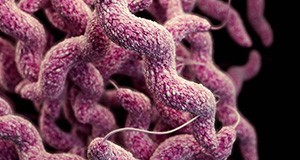
Campylobacteriosis is a gastrointestinal infection caused by bacteria of the genus Campylobacter. These bacteria require low levels of oxygen to survive and have been found in wild birds, poultry, pigs, cattle, domesticated animals, unpasteurized milk, produce, and contaminated water. A part of a series on preventing foodborne illness, this five-page fact sheet describes the Campylobacter bacteria, the causes and symptoms of campylobacteriosis disease, and how to prevent the disease through good sanitation methods and practices for receiving, handling, processing, and storing food products. Written by Soohyoun Ahn, Renée M. Goodrich-Schneider, Rachael Silverberg, and Keith R. Schneider, and published by the Food Science and Human Nutrition Department.
http://edis.ifas.ufl.edu/fs098
The Cost of Food Safety
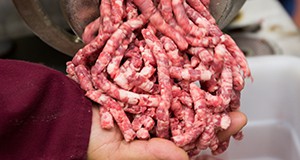 This new publication discusses the costs and long-term benefits associated with the implementation of food safety programs. This 5-page fact sheet covers the history of HACCP, costs associated with the application of food safety programs, reasons to improve food safety, and the financial impact of foodborne illnesses. Written by Annelys Hessing, Renée Goodrich Schneider, Alan Gutierrez, Rachael Silverberg, Michael S. Gutter, and Keith R. Schneider, and published by the UF Department of Food Science and Human Nutrition, October 2015.
This new publication discusses the costs and long-term benefits associated with the implementation of food safety programs. This 5-page fact sheet covers the history of HACCP, costs associated with the application of food safety programs, reasons to improve food safety, and the financial impact of foodborne illnesses. Written by Annelys Hessing, Renée Goodrich Schneider, Alan Gutierrez, Rachael Silverberg, Michael S. Gutter, and Keith R. Schneider, and published by the UF Department of Food Science and Human Nutrition, October 2015.
http://edis.ifas.ufl.edu/fs270
Food Safety within the Household: Risk Reduction
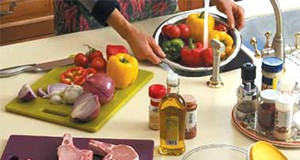
Food poisoning is common in the United States. The CDC estimates that 48 million Americans acquire foodborne illness every year, many of which were attributed to food preparation occurring in private homes. In 2013, the top five identified bacterial and viral causes of food poisoning attributed to home food preparation were Salmonella, norovirus, shiga-toxin-producing Escherichia coli, Clostridium perfringens, and Campylobacter. This six page fact sheet outlines the most common food-safety handling mistakes, which are improper food storage, inadequate cooking or reheating temperatures, cross-contamination, and infected food handlers. Written by Lucianna Grasso, Rachael Silverberg, George L. Baker, Renée M. Goodrich-Schneider, and Keith R. Schneider, and published by the Food Science and Human Nutrition Department.
http://edis.ifas.ufl.edu/fs195
Preventing Foodborne and Non-foodborne Illness: Vibrio parahaemolyticus
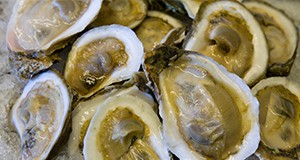 Vibrio parahaemolyticus is a naturally occurring bacterium that inhabits coastal brackish marine waters throughout the world and is commonly found in the United States and Canada. If ingested in sufficient numbers, this bacterium can cause illness such as gastroenteritis with symptoms such as cramps, vomiting, and nausea. Illnesses linked with this organism are usually associated with the consumption of raw or improperly cooked seafood, particularly raw oysters. This 3-page fact sheet is a major revision that discusses Vibrio parahaemolyticus, illness caused by the bacterium, factors that increase risk of infection, methods of infection, seafood and shellfish handling recommendations, and prevention. Written by Anita C. Wright, Renée M. Goodrich, Michael A. Hubbard, and Keith R. Schneider, and published by the UF Department of Food Science and Human Nutrition. Original publication date: July 2009. Revised October 2015.
Vibrio parahaemolyticus is a naturally occurring bacterium that inhabits coastal brackish marine waters throughout the world and is commonly found in the United States and Canada. If ingested in sufficient numbers, this bacterium can cause illness such as gastroenteritis with symptoms such as cramps, vomiting, and nausea. Illnesses linked with this organism are usually associated with the consumption of raw or improperly cooked seafood, particularly raw oysters. This 3-page fact sheet is a major revision that discusses Vibrio parahaemolyticus, illness caused by the bacterium, factors that increase risk of infection, methods of infection, seafood and shellfish handling recommendations, and prevention. Written by Anita C. Wright, Renée M. Goodrich, Michael A. Hubbard, and Keith R. Schneider, and published by the UF Department of Food Science and Human Nutrition. Original publication date: July 2009. Revised October 2015.
http://edis.ifas.ufl.edu/fs146
Frequently Asked Questions about Vibrio in Florida
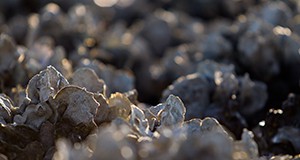
Florida is a tropical paradise that attracts marine enthusiasts and seafood lovers from around the world. Its extensive waterways not only offer unique areas for us to explore but also provide essential habitat for marine life, including marine bacteria that keep the habitat in healthy balance by breaking down organic matter and providing food for larger organisms. One type of marine bacteria known as Vibrio sometimes causes infections and seafood sickness in people with weakened immune systems, but Vibrio should not keep Floridians and visitors from enjoying their favorite activities because Vibrio infections are rare and easy to prevent. This 7-page fact sheet written by Gabby Barbarite, Peter J McCarthy, Holly Abeels, and Anita Wrightwill and published by the Florida Sea Grant College Program will help you ensure that your time on the water is as safe and enjoyable as possible.
http://edis.ifas.ufl.edu/SG140
Vida Saludable: Sitios web confiables
 The number of resources available online grows every day. Unfortunately, there are no regulations to ensure that the information on these websites is accurate. Older adults can readily access reliable information on the Internet by focusing on government and education sites. This 3-page fact sheet is a major revision of the Spanish version of FCS-8587, Healthy Living: Reliable Websites. It provides a list of trustworthy Internet sources related to nutrition, health, food safety, and general interest for older adults. Written by Linda B. Bobroff and Leigh Ann Martin, and published by the UF Department of Family, Youth and Community Sciences, revised November 2015.
The number of resources available online grows every day. Unfortunately, there are no regulations to ensure that the information on these websites is accurate. Older adults can readily access reliable information on the Internet by focusing on government and education sites. This 3-page fact sheet is a major revision of the Spanish version of FCS-8587, Healthy Living: Reliable Websites. It provides a list of trustworthy Internet sources related to nutrition, health, food safety, and general interest for older adults. Written by Linda B. Bobroff and Leigh Ann Martin, and published by the UF Department of Family, Youth and Community Sciences, revised November 2015.
http://edis.ifas.ufl.edu/fy103
Sous Vide Cookery: Foodservice Application for Larger, Less Tender Cuts
 Meat with an abundance of connective tissue presents a certain challenge to cooks who want to make it more tender while still properly eliminating pathogens that cause foodborne illness. Sous vide cookery provides precise temperature control and tenderness improvement with minimal supervision throughout cooking as well as consistent, almost perfect reproducibility. This 4-page fact sheet introduces the reader to the sous vide method and covers its advantages and necessary equipment. The piece also offers tips on cooking, chilling, storing, and reheating large cuts of meat. Written by Chad Carr, Derek Griffing, Kaylie Madore, Dwain Johnson, Jason Scheffler, and João Neto, and published by the UF Department of Animal Sciences, September 2015.
Meat with an abundance of connective tissue presents a certain challenge to cooks who want to make it more tender while still properly eliminating pathogens that cause foodborne illness. Sous vide cookery provides precise temperature control and tenderness improvement with minimal supervision throughout cooking as well as consistent, almost perfect reproducibility. This 4-page fact sheet introduces the reader to the sous vide method and covers its advantages and necessary equipment. The piece also offers tips on cooking, chilling, storing, and reheating large cuts of meat. Written by Chad Carr, Derek Griffing, Kaylie Madore, Dwain Johnson, Jason Scheffler, and João Neto, and published by the UF Department of Animal Sciences, September 2015.
http://edis.ifas.ufl.edu/an320
Avian Diseases Transmissible to Humans
 Anyone who keeps birds, whether as pets or as production animals, should be aware that certain avian diseases can be transmitted to humans. The seriousness of the disease in humans varies with human hosts’ age, overall health, and immune status as well as virulence of the organism, infective dose, and route of infection. This 4-page fact sheet is a major revision which discusses causes and symptoms of avian influenza (bird flu), chlamydiosis, salmonellosis, colibacillosis, encephalitis viruses, avian tuberculosis, Newcastle Disease, and cryptosporidiosis. Written by Michael A. Davis, Gary D. Butcher, and F. Ben Mather, and published by the UF Department of Animal Sciences, revised August 2015. Original publication date: August 1997.
Anyone who keeps birds, whether as pets or as production animals, should be aware that certain avian diseases can be transmitted to humans. The seriousness of the disease in humans varies with human hosts’ age, overall health, and immune status as well as virulence of the organism, infective dose, and route of infection. This 4-page fact sheet is a major revision which discusses causes and symptoms of avian influenza (bird flu), chlamydiosis, salmonellosis, colibacillosis, encephalitis viruses, avian tuberculosis, Newcastle Disease, and cryptosporidiosis. Written by Michael A. Davis, Gary D. Butcher, and F. Ben Mather, and published by the UF Department of Animal Sciences, revised August 2015. Original publication date: August 1997.
http://edis.ifas.ufl.edu/ps019
Consejos para pleanear contra desastres para gente mayor
 FY1462 is the Spanish language version of FY620, Disaster Planning Tips for Older Adults. This 4-page publication offers an abundance of information pertaining to water storage and use, food, first aid, important papers, electronics, medical needs, stress reduction, and evacuation which can help older adults plan for natural disasters and other emergencies. Written by Carolyn Wilken, Linda B. Bobroff, and Emily Minton, and published by the Department of Family, Youth and Community Sciences, May 2003.
FY1462 is the Spanish language version of FY620, Disaster Planning Tips for Older Adults. This 4-page publication offers an abundance of information pertaining to water storage and use, food, first aid, important papers, electronics, medical needs, stress reduction, and evacuation which can help older adults plan for natural disasters and other emergencies. Written by Carolyn Wilken, Linda B. Bobroff, and Emily Minton, and published by the Department of Family, Youth and Community Sciences, May 2003.
http://edis.ifas.ufl.edu/fy1462
Preventing Foodborne Illness: Bacillus cereus
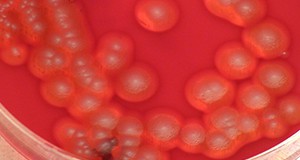
Ingesting foods contaminated with Bacillus cereus bacteria can lead to nausea, vomiting, abdominal cramps, and diarrhea. Though B. cereus is commonly found in many types of fresh and processed foods, proper cooking, handling, and storage can minimize the risk of contamination. This 5-page fact sheet explains how B. cereus is transmitted, what foods it is commonly associated with, the methods used to prevent contamination, and good practices for receiving, handling, processing, and storing food. Written by Keith R. Schneider, Renée Goodrich Schneider, and Rachael Silverberg, and published by the UF Department of Food Science and Human Nutrition, August 2015.
http://edis.ifas.ufl.edu/fs269
Value-Added Products for Fresh Highbush Blueberries

Blueberries are one of the most popular fruits worldwide. Blueberries’ health benefits have fueled this popularity, and today, blueberries can be found in products ranging from nutritional supplements to pet food. This 4-page fact sheet covers the processing methods such as freezing or drying that transform fresh blueberries into ingredients that can be used in other products. Written by Ruiqi Li and Liwei Gu, and published by the UF Food Science and Human Nutrition Department, June 2015.
http://edis.ifas.ufl.edu/fs268
Preventing Foodborne Illness: Norovirus
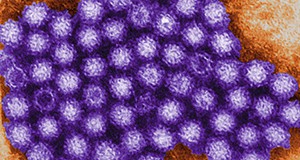
If you have ever had the stomach flu, norovirus was likely the culprit. Norovirus is the most common cause of foodborne illness in the United States and is transmitted through direct person-to-person contact or contaminated objects and food. This 5-page fact sheet covers how norovirus is spread, foods associated with norovirus, symptoms of infection, who is at risk, as well proper sanitation methods for preventing the spread of norovirus. Written by Rachael Silverberg, Melissa K. Jones, Renée Goodrich Schneider, Aswathy Sreedharan and Keith R. Schneider, and published by the UF Food Science and Human Nutrition Department, June 2015.
http://edis.ifas.ufl.edu/fs129
